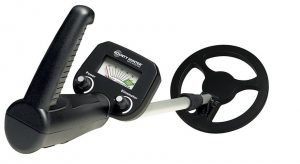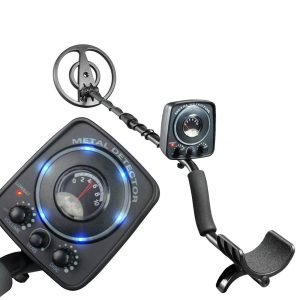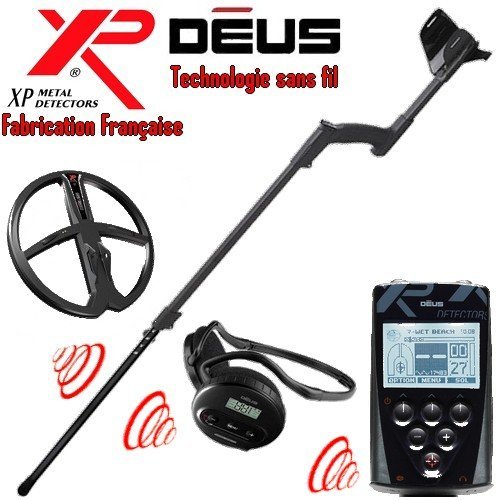Metal detectors have been used for many years for many reasons. When visiting beaches in the UK, as the crowds disperse to make their way home I have often seen someone scouring the beach with a metal detector, but before we find out how it works and its uses let’s look into the history of the great metal detector, who uses them and for what purposes.
What is a metal detector?
A metal detector does exactly what it states detects metal. It is an electronic device that will pick up any metal signals nearby which are beneath or on top of the surface. This could be anything from tin cans to jewelry. When it is close to metal it will let off a type of an alarm to let the user know they are close to a hidden treasure. It is what we call electro magnetism that enables the detector to do its job.
Electromagnetism
 If you are as old as I am then you will remember the electromagnet school project. Wrapping a nail with a coil wire and hooking it up to a battery make the electro-magnet simply. This is electricity meeting magnetism at its simplest form.
If you are as old as I am then you will remember the electromagnet school project. Wrapping a nail with a coil wire and hooking it up to a battery make the electro-magnet simply. This is electricity meeting magnetism at its simplest form.
Every time we use any electrical devices or appliances we are relying on the connection between electric and magnetism. From wind turbines to power plants the electromagnetism is made by a generator, this is really just a big drum of copper wire. When this wire rotates at a vast speed through the magnetic field, electricity is magically generated inside.
How Electromagnetism Works in a Metal Detector
The simplest metal detector contains a wire coil known as the “transmitter coil” which is wrapped around the handle of the detector. When the electricity flows through the coil it creates a magnetic field around it. As the treasure hunter sweeps the detector across the ground they make the magnetic field move around to. When the metal detector is near a metal object it the moving magnetic field affects the atoms inside the metal. It actually affects the way the electrons move.
The metal detector induces some of the activity in the metal, when you move the metal detector over a piece of metal, the magnetic field coming from the detector cause another magnetic field to appear around the metal. The second magnetic field is how the detector picks up metal by using a “receiver coil”. This is a second coil wire that is connected to a loudspeaker. When you mover the detector near a piece of metal the loud speaker will sound an alarm of beeps.
The closer you move the transmitter coil to a piece of metal the stronger the magnetic field the metal creates in the receiver coil, the more current that flows to the loudspeaker, the louder the noise.
How Deep Do Metal Detectors Go? Why it differs.
- Depending on surroundings that are being searched soil or sand.
- The orientation of the object. E.g. if the object is buried flat are easier to find then objects buried downwards, simply because the surface area is easier to pick up.

- The size shape and type of things buried, it goes without saying an object of larger size will feed back bigger electromagnetic fields.
- The age of the object, older objects are prone to oxidising or corrosion, making them harder to find.
Generally speaking the depth would be 20-50cm (8-20ins).
Using metal detectors properly
Choose – Choose the correct metal detector for the usage. Treasure hunters tend to use a low frequency metal detector because it more sensitive.
Read – Be sure to read the instructor manual for your metal detector as they can differ.
Search Patterns – Do you want to be methodical in one area or work around the borders first? The exact pattern is not important but will always keep the user on track.
Sweeping – There is a certain technique to be used when using metal detectors from the sweeping motion to the height. If you hold the base coil to high above ground depth then you are likely to miss objects. If you swing or walk too quickly you are also likely to miss objects.
 The best way to describe using the detectors is as a painter would use a paint roller. Pretend you are painting the ground leaving no unpainted gaps. Cover the ground evenly slowly sweeping side-to-side walking slowly forwards.
The best way to describe using the detectors is as a painter would use a paint roller. Pretend you are painting the ground leaving no unpainted gaps. Cover the ground evenly slowly sweeping side-to-side walking slowly forwards.
Height – With regards to height you need to hold the base coil as close to the ground as possible. Unless you are use the detector in tall grass, in this case you would need to hold the base coil around 3 – 4 inches from the ground. On the switch side if you use the detector on the beach you are able to sweep through the sand. Remembering that the further you are away from the surface the more depth you lose. An example; imagine an old coin 6 inches below ground and your metal detector can read up to 8 inches. If the coil is just 3 inches above ground you will miss the coin.
Accessories – It is always a good idea to buy headphones when purchasing a metal detector. It is imperative to be able to hear the frequency especially in the more sensitive brands of metal detecting. It enables the hunter to determine whether it is worth digging or not. It will amplify the smallest beeps ensuring better chances of success.
Practice – In order to become a successful hunter, it is a god idea to learn the different beeps and what they mean it is always a good idea to practice. You could use nails, tin cans, gold rings or coins. Once you have the different beeps mastered you can continue on your treasure hunt.
Ask – Don’t be afraid to ask for advice from others
Navigation – It is very important to make sure you have honed in on the artifact before you decide to dig. In order to narrow down the area the user should move the metal detector around side to side and front to back, until they have a good idea of exactly where the item is. Digital detectors themselves have a indicator screen that helps the user to narrow in even further on the item.
All Options open – Most metal detectors these days allow the investor to choose what type of treasure to look for. For example if the investor selects rings and coins when it hit says a coke ring pull it won’t beep. It is advisable that the device is set to all metal options, because this will enable a higher chance of finding jewellery or gold.
Salt – Salt can interfere with metal detectors signals. So when combing a beach it may be necessary to adjust the sensitivity on the device. You may lose some depth but at least the frequency you pick up should be correct.
